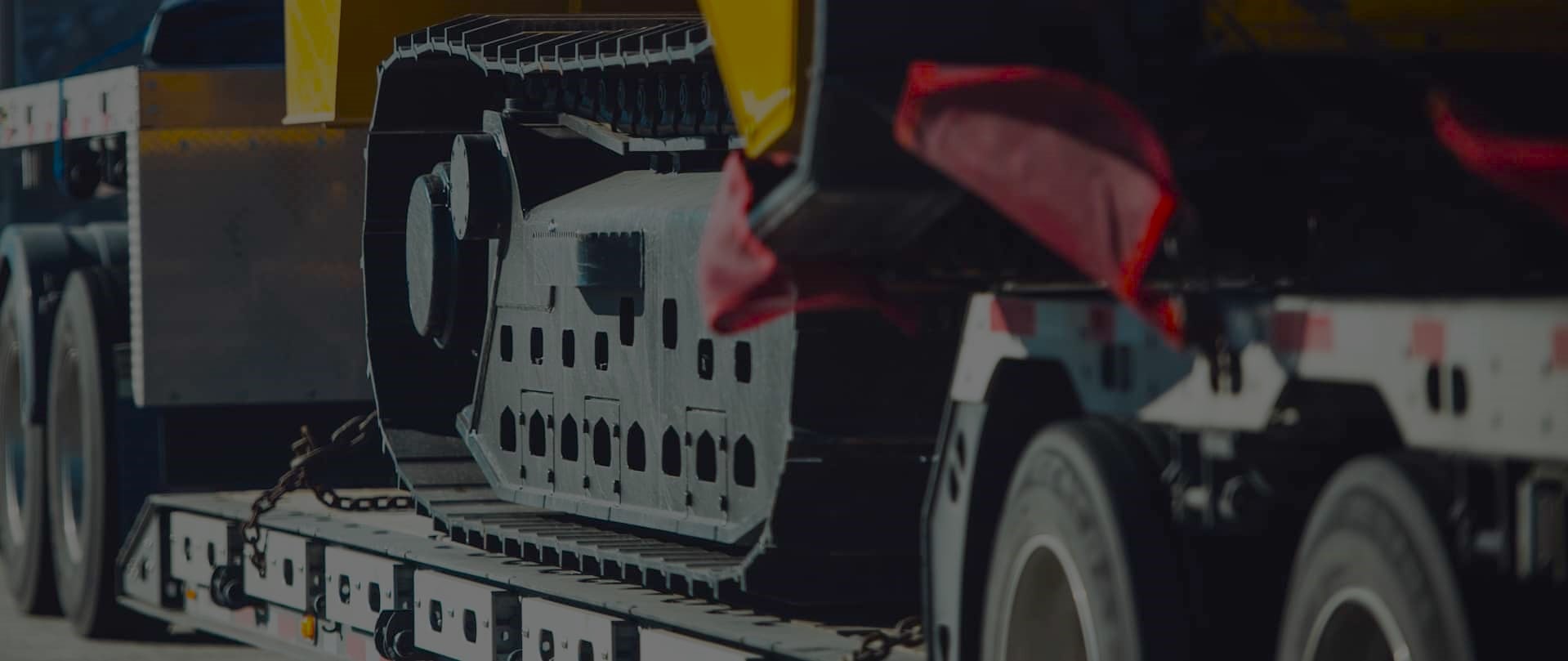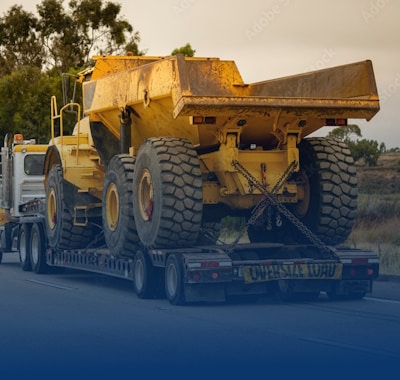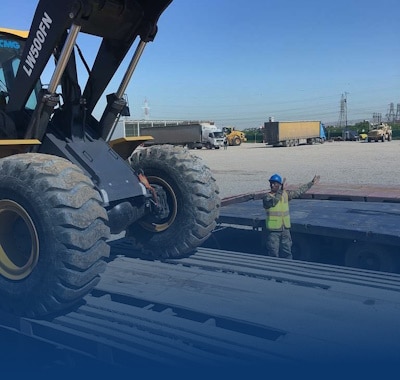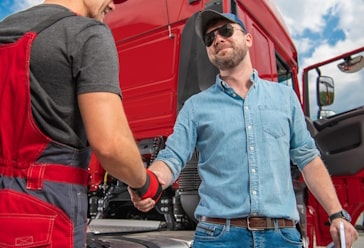Expert Wide-Load Shipping & Permit Planning
Freedom Heavy Haul can offer expedited Pickup and Delivery for any size shipment anywhere in the USA. Contact us today for No Hassle, No Pressure Pricing.
Wide-load shipping needs expert help for permits and routes. It’s key for moving big cargo smoothly. If you work in construction or manufacturing, dealing with permits can be tough. Getting professional help makes your shipping process better and safer.
In this article, you’ll see how experts make your logistics easier. They help avoid problems on the road.
Key Takeaways
- Understand the critical role of expert support in wide-load shipping.
- Know the importance of thorough permit planning for oversized transport.
- Learn how route planning increases safety during heavy haul trucking.
- Identify essential factors when selecting a trucking partner.
- Get insights into superload logistics and its associated challenges.
- Discover the advantages of working with specialized dimensional freight services.
Understanding Wide-Load Shipping
Wide-load shipping means moving big loads that are bigger than usual cars. These big loads need special routes, trucks, and permits. Knowing how this works is key for safe and successful heavy haul trucking.
What is Wide-Load Shipping?
Wide-load shipping means moving things that are wider, taller, or longer than normal. These sizes can change by state, affecting the rules for moving big loads. Truckers must follow strict rules to keep everyone safe and follow the law.
Key Characteristics of Oversized Loads
Knowing what makes a load oversized is important. The main things to remember are:
- Height: Usually no more than 14 feet, depending on the route.
- Width: Usually 8.5 feet, but some places allow up to 12 feet.
- Length: Longer than 48-53 feet makes a load oversized.
- Weight: Federal laws set weight limits for heavy haul trucking.
Also, special vehicles like cranes need special care when shipping. Knowing this helps make shipping big loads smoother and more efficient.
| Dimension | Standard Limit | Potential Oversized Limits |
|---|---|---|
| Height | 13.5 feet | Up to 14 feet |
| Width | 8.5 feet | 12 feet in some states |
| Length | 48 feet | 53 feet in specific cases |
| Weight | Limited by federal bridge laws | Varies depending on route |
In short, learning about wide-load shipping helps make moving big loads easier and safer. It helps avoid problems and keeps everything running smoothly.
The Importance of Permit Planning
Permit planning is key when shipping oversized loads. It ensures you follow all local, state, and federal rules. This makes transport safe and efficient. Working with the right permits saves time and avoids legal problems.
Why Permits Matter in Wide-Load Shipping
Permits are crucial for legal oversized load transport. They help follow safety rules, reducing road risks. Without proper planning, your shipment might face delays, fines, or changes in route. Knowing the needed permits helps plan logistics well and keeps your shipping on track.
Types of Permits Required
Wide-load shipping needs different permits based on the transport details. Here’s a look at some important ones:
| Permit Type | Description | Usage Case |
|---|---|---|
| Oversize/Overweight Permit | Allows transport of loads exceeding standard size or weight limits. | Used for oversized construction equipment or large machinery. |
| Route-Specific Permit | Designated for specific roads along the transport route. | Necessary when traveling through certain jurisdictions or infrastructure. |
| State Line Transport Permit | Required for crossing state lines, adhering to different regulations. | Important for interstate shipments involving varied permit needs. |
| Special Conditions Permit | Issuance in response to unique situations or load characteristics. | Useful when transporting unusual or extraordinary shipments. |
Knowing the permits needed for your project makes the process smoother from start to end.
Wide-Load Shipping with Expert Permit Support and Route Planning
Using professional services for wide-load shipping has big benefits. Expert permit support makes the process smoother and avoids common problems. A team can handle permit applications quickly, getting approvals on time. Good route planning also boosts safety and efficiency.
Benefits of Expert Permit Support
Expert permit support makes wide-load shipping easier. It helps you follow local laws and avoid expensive mistakes. Some key benefits are:
- Reduced delays: Knowing local rules speeds up applications.
- Compliance assurance: Experts keep you legal, avoiding fines.
- Knowledge of restrictions: They know state rules, avoiding surprises.
How Route Planning Enhances Safety and Efficiency
Good route planning is key for safe oversized shipments. It keeps away from low bridges and narrow roads. This makes shipping more efficient. Important parts include:
- Scouting alternate paths: Finding the best routes lowers risk.
- Height and weight verification: Checking road limits ensures smooth transport.
- Adjusting for weather conditions: Planning for bad weather makes transport safer.
Combining expert permit support with careful route planning leads to a successful transport. These steps protect your shipments and give you peace of mind.
| Aspect | Expert Permit Support | Route Planning |
|---|---|---|
| Speed of Process | Faster approvals due to expertise | Quicker route identification |
| Cost Efficiency | Avoidance of penalties | Reduced fuel and time costs |
| Compliance | Ensures legal adherence | Avoids hazards that could lead to violations |
Choosing the Right Heavy Haul Trucking Company
Choosing the right heavy haul trucking company is key to your commercial transportation success. Many factors should guide your choice. Look at the experience of potential haulers, their safety records, and what equipment they have. Also, knowing local regulations is crucial for a smooth transport experience.
What to Look for in a Trucking Partner
When picking a heavy haul trucking company, consider these points:
- Experience: Choose haulers with a focus on heavy and oversized loads.
- Safety Record: Check their safety history for any incidents or violations.
- Equipment and Technology: Make sure they have the right gear for your needs.
- Regulatory Knowledge: They should know local and state transport laws well.
- Customer Service: Pick a company that values good communication and is easy to work with.
Questions to Ask Potential Haulers
Ask potential heavy haul partners specific questions to get clear answers. Here’s a checklist:
| Question | Purpose |
|---|---|
| What is your experience with oversized loads? | To check their knowledge and skill in handling big shipments. |
| Can you provide references from similar projects? | To see if they’re credible and have done well in the past. |
| What safety measures do you have in place? | To know their commitment to safe transport of loads. |
| How do you handle permits and regulations? | To see if they know the legal rules for commercial transport. |
| What is your estimated timeline for transportation? | To understand their efficiency and if they can meet your deadlines. |
Finding the right heavy haul trucking company is crucial for your commercial transport needs. Focus on experienced haulers and ask the right questions. This sets the stage for a successful partnership.
Essential Aspects of Superload Logistics
Superload logistics is about planning and moving oversized loads that go beyond usual sizes. It’s key to know the rules and challenges to do it well. Managing these aspects well can really help your success.
Understanding Superloads
A superload is any shipment that’s too big or heavy for usual rules. Moving these loads needs special vehicles and skills. Companies also face challenges like finding the right routes and getting permits.
Superload Transport Regulations
Following the rules for superloads is important for safety and to avoid legal issues. Each state has its own rules for oversized loads. This includes getting special permits and using safe vehicles.
Logistics Challenges and Solutions
Shipping superloads comes with many challenges. Issues include managing traffic, getting permits, and finding the right routes. To solve these, having a good plan is crucial.
- Do detailed route checks to find problems
- Work with local authorities to follow rules
- Use tracking systems to keep an eye on the load
By tackling these challenges early, you can make shipping superloads smoother and more successful.
Dimensional Freight Services: An Overview
Understanding dimensional freight services is key for safe and efficient transport of wide-load shipping. These services offer tailored solutions for oversized loads that can’t fit standard transport. Specialized transport is vital for cargo of all sizes and shapes.
Types of Dimensional Freight Services
Dimensional freight services vary based on the load and transport needs. Here are some common types:
- Flatbed trucking: Great for large and heavy items needing open access.
- Step-deck trailers: Good for taller loads, offering better height clearance.
- Lowboy trailers: Ideal for heavy haul logistics, ensuring stability during transit.
- Specialized carriers: Designed for specific oversized loads, using the right equipment for each job.
Advantages of Specialized Service Providers
Choosing experienced service providers for dimensional freight services offers many benefits:
- Expertise: Specialized transport companies know how to handle oversized loads and follow regulations well.
- Safety: The right equipment and trained staff reduce risks in heavy haul logistics.
- Efficiency: Proper planning and execution cut down transport time, getting your cargo to its destination quickly.
- Compliance: Professionals keep up with permit and route rules, making transport smoother.
Wide Load Escorts: Ensuring Safe Transport
Escort vehicles are key to safely moving oversized loads. They help keep transport safe and meet certain requirements. Knowing when an escort is needed can make your transport safer and more efficient.
The Role of Escort Vehicles
Escort vehicles guide wide loads safely through different places. They manage traffic and warn other drivers about the oversized load. They also offer physical and visual support, keeping everyone on the road safe.
When Do You Need an Escort?
Deciding if you need an escort depends on several things. These include the load’s size and weight, and local rules. Generally, you might need an escort if:
- The load is too wide or tall for local limits
- The road is narrow or hard to navigate
- You’re moving the load at night when it’s hard to see
- The area is very crowded and traffic needs to be controlled
| Escort Requirement | Load Width | Transportation Type |
|---|---|---|
| Required | Over 8.5 feet | Overland Transport |
| Recommended | Between 8.5 to 12 feet | Heavy Equipment |
| Optional | Less than 8.5 feet | Standard Transport |
Using escort vehicles makes sure you follow local laws. Knowing these rules helps plan a successful move of wide loads.
Route Surveys: Planning Your Journey
Planning oversized transports is crucial, and route surveys are key. They give insights into the path oversized loads will take. They look at obstacles and laws that might affect the transport.
What is a Route Survey?
A route survey checks the path for oversized cargo. It looks at road conditions, bridge heights, and narrow spots. This helps find the safest way to transport.
Benefits of Conducting a Thorough Survey
Doing a detailed route survey improves wide load logistics. It also reduces unexpected problems. The main advantages are:
- Obstacle Identification: Finding barriers like low bridges or narrow roads helps avoid delays.
- Precise Planning: Knowing the best routes helps schedule and plan better for oversized transports.
- Risk Reduction: Knowing risks lets you plan for emergencies, making the journey safer.
- Cost Efficiency: Choosing the right route can save on fuel and labor, making your project cheaper.
| Survey Aspect | Description |
|---|---|
| Road Conditions | Checking the roads for potholes and surface types. |
| Height Restrictions | Finding bridge heights and other overhead issues. |
| Width Limitations | Ensuring the road is wide enough for oversized loads. |
| Local Regulations | Learning about local laws that affect wide load logistics. |
With careful route surveys, oversized transports can move smoothly. This reduces delays and boosts logistics efficiency. Plan well and enjoy the peace of mind that comes with thorough assessments.
Achieving Permit Compliance
Knowing about permit compliance is key for wide-load shipping success. You need to follow state and federal laws for shipping. This part will give you the lowdown on important legal stuff and common issues in wide-load transport.
Understanding Legal Requirements
Every state has its own rules for shipping big loads. You must get the right permits for your cargo’s size and weight. It’s not just about getting permits; you also need to keep records up to date and know about rule changes. Important papers include:
- Transport permits
- Insurance certificates
- Route surveys
Knowing these laws well can really help you succeed in wide-load transport.
Common Compliance Issues to Avoid
There are a few big problems that can mess up your permit compliance in wide-load transport. Knowing about these can help you avoid them:
| Compliance Issue | Description | Prevention Strategy |
|---|---|---|
| Insufficient Documentation | Failing to provide required documents can lead to fines. | Prepare and verify all documentation before transport. |
| Route Non-Compliance | Using routes not authorized for wide-load transport. | Conduct thorough research and route surveys. |
| Timing Violations | Transporting oversized loads during restricted hours. | Check local regulations regarding transport times. |
By tackling these issues early, you can keep your permit compliance strong. Knowing these key points helps you deal with the tough parts of wide-load transport better.
Tips for Seamless Wide-Load Transport
For smooth wide-load transport, you need to pay close attention to details and plan ahead. This guide offers key tips on how to get ready and keep everyone informed during the journey.
Preparation and Planning Essentials
Getting ready is key for a smooth transport. Begin by making a detailed plan that covers:
- Checklists for all logistical steps, like loading and unloading.
- An in-depth route analysis to spot any hurdles or restrictions.
- Knowing your load’s size to meet regulations.
- Adjusting your schedule for any urgent needs.
These steps help avoid delays and make the transport more efficient.
Communication with Local Authorities
Talking to authorities is crucial for a smooth transport. It’s smart to:
- Tell local agencies about your route, especially in busy areas.
- Get permits and understand any special rules for your load.
- Have a contact for help during the transport.
- Keep them updated if your schedule changes.
Good communication with local authorities lowers the chance of problems. It makes your transport journey more successful.
Conclusion
Understanding expert wide-load shipping is key. It involves knowing about permits and logistics for oversized loads. Each step, from getting permits to doing route surveys, is crucial for success.
Working with experienced professionals is very beneficial. They help you deal with rules and keep everyone safe on the road. This support makes the whole process smoother and more successful.
When you plan your next project, remember the importance of strategy, clear communication, and strong partnerships. With the right tools, navigating the complex world of wide-load shipping becomes easier. It’s not just a need; it’s a chance to improve logistics and get great results.







